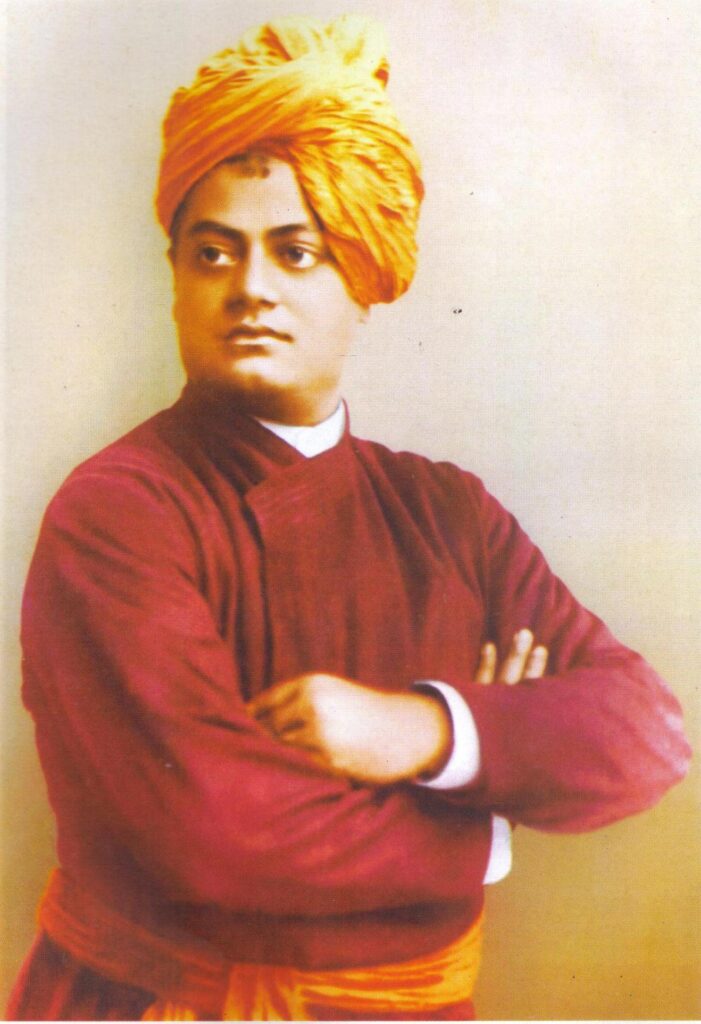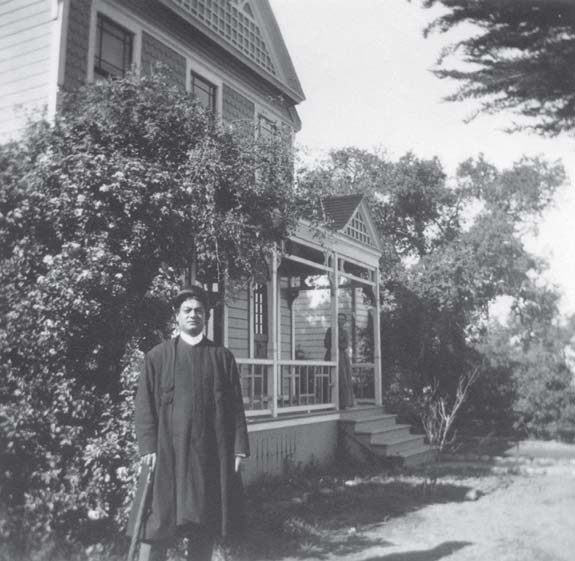Swami Vivekananda Biography Personal Life
| Name | Narendranath Datta |
| Nick Name | Narendra |
| Profession | Spiritual Guru |
| Date of Birth | 12 January 1863 |
| Died | 4 July 1902 (aged 39) |
| Sun Sign | Not Known |
| Birth Place | Gour Mohan Mukherjee Street in Calcutta |
| Guru | Ramakrishna Paramahansa |
| Religion | Hindu |
| Nationality | Indian |
| Hometown | Gour Mohan Mukherjee Street in Calcutta |
| School | Read Below |
| College | University of Calcutta (BA) |
| Subjects Of Study | Hinduism Vedanta |
Swami Vivekananda Family
| Father | Vishwanath Datta |
| Mother | Bhubaneswari Devi |
| Brother | Not Known |
| Sister | Not Known |
Profession & Works
| Profession | Spiritual Guru |
| Quote | “Arise, awake and stop not till the goal is achieved” |
| Founder | Ramakrishna Math, Ramakrishna Mission |
| Literary Works | Raja Yoga, Karma Yoga, Bhakti Yoga, My Guru, Lectures given from Almora to Colombo |
Also Read: Aniruddhacharya Ji Maharaj Biography
Swami Vivekananda Biography in Details
Swami Vivekananda Wiki/Bio:
Swami Vivekananda (born Narendranath Datta) was a Hindu monk, philosopher, author, religious teacher, and one of the most influential spiritual leaders of the late 19th and early 20th centuries.
He was a crucial figure in the introduction of Indian philosophies of Yoga and Vedanta in the Western world, and Swami Vivekananda is credited with raising interfaith awareness, bringing Hinduism to the status of a major world religion during the late 19th century. He was the chief disciple of the 19th-century saint Ramakrishna and the founder of Ramakrishna Math and Ramakrishna Mission.
Born:
Vivekananda was born in Calcutta, British India, in 1863. As a young man, he was interested in a wide range of subjects, including philosophy, religion, history, and social issues. He studied Western philosophy and was particularly interested in the works of Immanuel Kant, Johann Gottlieb Fichte, and Arthur Schopenhauer. He was also interested in the Bhagavad Gita and other Hindu texts (Dharm Granth).
Swami Vivekananda Education:

Swami Vivekananda received a formal education in the traditional Indian system of education as well as in British colonial schools. He studied at various schools in Calcutta, including the Metropolitan Institution (later known as the Metropolitan College) and the Presidency College. He excelled academically and was proficient in a wide range of subjects, including mathematics, science, history, and literature.
Vivekananda was particularly interested in Western philosophy and had a deep understanding of the works of Immanuel Kant, Johann Gottlieb Fichte, and Arthur Schopenhauer. He also read and studied the Bhagavad Gita and other Hindu texts.
Vivekananda was not satisfied with formal education alone and developed a strong desire to explore spiritual knowledge. His spiritual quest led him to meet Sri Ramakrishna, a saint, and spiritual teacher, who became his guru and had a profound impact on his life. Under Ramakrishna’s guidance, Vivekananda gained deep spiritual insights and knowledge, which he later shared with others through his teachings and lectures.
He also traveled extensively throughout India and met many spiritual leaders, saints, and scholars. He studied with them and gained a deep understanding of the different spiritual traditions of India.
In summary, Swami Vivekananda received a formal education in the traditional Indian system of education as well as in British colonial schools, but his spiritual education under the guidance of Sri Ramakrishna was the most crucial for his development as a spiritual leader.
Career:
In 1881, at the age of 18, he met Ramakrishna, who became his spiritual teacher and guru. Ramakrishna’s teachings and influence had a profound impact on Vivekananda’s life, and he became one of his closest disciples.
In 1886, Ramakrishna passed away, and Vivekananda, along with other disciples, founded the Ramakrishna Math and Ramakrishna Mission. He began traveling across India, giving lectures and spreading Ramakrishna’s teachings.
In 1893, Vivekananda represented India at the World’s Parliament of Religions in Chicago, where he delivered a powerful speech on the harmony of religions, which made him an instant sensation. He spent the next several years in the United States and Europe, giving lectures and establishing the Vedanta Society.
In 1897, Vivekananda returned to India and focused on organizing the Ramakrishna Math and Ramakrishna Mission. He also continued to travel and give lectures across India, promoting education, social service, and the empowerment of women and the underprivileged.
Swami Vivekananda’s most famous lecture in the United States:
Swami Vivekananda’s most famous lecture in the United States was delivered at the World’s Parliament of Religions in Chicago in 1893. This was a historic event that marked the first major gathering of representatives from different religions from around the world. The Parliament was held as part of the World’s Columbian Exposition, a world’s fair that celebrated the 400th anniversary of Christopher Columbus’ arrival in America.
Vivekananda’s speech, which was given on September 11, 1893, was titled “Sisters and Brothers of America”. He began by addressing the audience as “Sisters and Brothers of America” and made a lasting impression on the crowd with this opening line.
In his speech, he spoke about the unity of religions and the universality of spiritual truths. He emphasized the importance of tolerance and respect for all religions and spoke about the need for spiritual awakening in the modern world.
His speech was well received by the audience and the press, and it made him an instant sensation. He was invited to speak at several other venues across the United States and Europe, and his speeches were widely reported in the press.
During his stay in the USA, he also spoke at various places like Detroit, New York, and Boston, where he delivered lectures and held discussions on various topics such as the nature of God, the relationship between religion and science, and the importance of self-realization.
His speeches and lectures were very well received by the audience and he made a great impact on the people. He was able to bridge the gap between the East and the West and helped to spread the teachings of Vedanta and Yoga to the Western world.

Vivekananda passed away on July 4, 1902, at the young age of 39. His teachings and lectures continue to be popular and widely read today, and his legacy is considered to be the revival of Hinduism in India and the spread of Indian spiritual ideas to the West.
His teachings are based on Advaita Vedanta which is a non-dualistic philosophy that emphasizes oneness.
Social Media Account
Also Read: Safin Hasan Biography
Disclaimer All the information that we provide is collected from Google and Social media so we are not 100% sure that all the information is accurate if you found some information is wrong please let me know in a Comment.
